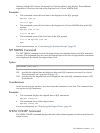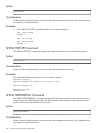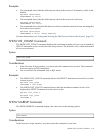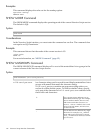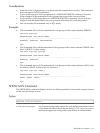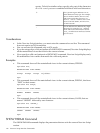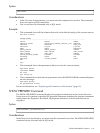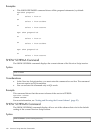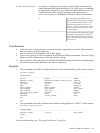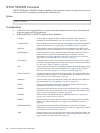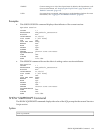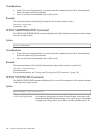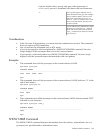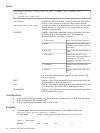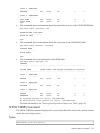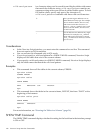
wild-card-pattern
is a character string used to search for and display schemas with
names that match the character string. wild-card-pattern matches
an uppercase string unless you enclose it within double quotes. To
look for similar values, specify only part of the characters of
wild-card-pattern combined with these wild-card characters:
Use a percent sign to indicate zero or
more characters of any type. For example,
%art% matches SMART, ARTIFICIAL,
and PARTICULAR but not smart or
Hearts. "%art%" matches smart and
Hearts but not SMART, ARTIFICIAL,
or PARTICULAR.
%
Use an underscore to indicate any single
character. For example, boo_ matches
BOOK and BOOT but not BOO or BOOTS.
"boo_" matches book and boot but not
boo or boots.
_
Considerations
• In the Neoview Script interface, you must enter the command on one line. The command
does not require an SQL terminator.
• You can execute this command only in SQL mode.
• If you do not specify a wild-card pattern in a SHOW SCHEMAS command, Neoview Script
displays all the schemas that exist in the default catalog.
• If you specify a wild-card pattern in a SHOW SCHEMAS command, Neoview Script displays
only the schema names that match the wild-card pattern.
Examples
• This command shows all the schemas that exist in the default catalog of the current session:
SQL>show schemas
SCHEMA NAMES
------------------------------------------------------------------------
DBA001 DBA082 DBMGR
DBSCRIPT_SALES DEFINITION_SCHEMA_VERSION_1200 DEMOSCH
DEMOSCH1 DEMOSCH2 DEMO_SCH
DEV060525 DS_SCH D_SALES
HMGR HPNVS HPNVSSCH
HPNVS_SAMPLE HPNVS_SAMPLE INVENT
ODBC_INVENT ODBC_PERSNL ODBC_SALES
ODBC_SCHEMA ODBC_TEST PERSNL
PUBLIC_ACCESS_SCHEMA ROLEDBA ROLEMGR
ROLEUSER SALES SCH
SERVICES T4JDBC_SCHEMA TEST1
USR
SQL>
• This command shows the schemas in the default catalog that have “SALES” in their names:
SQL>show schemas %sales%
SCHEMA NAMES
------------------------------------------------------------------------
DBSCRIPT_SALES D_SALES ODBC_SALES
SALES
SQL>
For more information, see “Showing the Schemas” (page 56).
SHOW SCHEMAS Command 121



